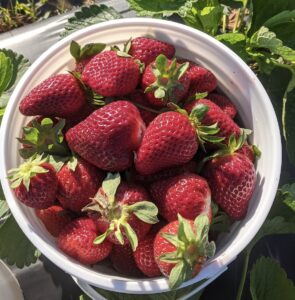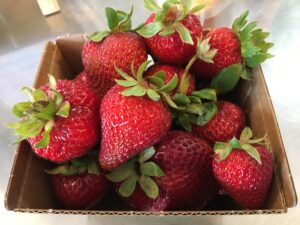Postharvest Produce Guide – Strawberries
go.ncsu.edu/readext?919117
en Español / em Português
El inglés es el idioma de control de esta página. En la medida en que haya algún conflicto entre la traducción al inglés y la traducción, el inglés prevalece.
Al hacer clic en el enlace de traducción se activa un servicio de traducción gratuito para convertir la página al español. Al igual que con cualquier traducción por Internet, la conversión no es sensible al contexto y puede que no traduzca el texto en su significado original. NC State Extension no garantiza la exactitud del texto traducido. Por favor, tenga en cuenta que algunas aplicaciones y/o servicios pueden no funcionar como se espera cuando se traducen.
Português
Inglês é o idioma de controle desta página. Na medida que haja algum conflito entre o texto original em Inglês e a tradução, o Inglês prevalece.
Ao clicar no link de tradução, um serviço gratuito de tradução será ativado para converter a página para o Português. Como em qualquer tradução pela internet, a conversão não é sensivel ao contexto e pode não ocorrer a tradução para o significado orginal. O serviço de Extensão da Carolina do Norte (NC State Extension) não garante a exatidão do texto traduzido. Por favor, observe que algumas funções ou serviços podem não funcionar como esperado após a tradução.
English
English is the controlling language of this page. To the extent there is any conflict between the English text and the translation, English controls.
Clicking on the translation link activates a free translation service to convert the page to Spanish. As with any Internet translation, the conversion is not context-sensitive and may not translate the text to its original meaning. NC State Extension does not guarantee the accuracy of the translated text. Please note that some applications and/or services may not function as expected when translated.
Collapse ▲Picking strawberries at peak ripeness is important, as strawberries will not ripen after harvest, resulting in less than optimal flavor and sweetness.

photo by Dr. Mark Hoffman
Remove field heat immediately after harvest, store at 32°F, 90-95% RH. Strawberries are sold in open quarts or gallons, or ventilated quart clamshells.
Quality Specifications
Strawberries should be fully colored to the calyx; color of ripe fruit is determined by variety (may be a lighter or darker red). Fruit should be intact, clean, without evidence of disease, insects or damage.
Common Quality Issues
Postharvest diseases are not a big issue for strawberries that have been properly sprayed during production followed by rapid cooling, and sold within a few days of harvest. Grey mold (Botrytis cinerea) is the disease most likely to be a concern postharvest. Holding at proper temperatures helps prevent this disease from developing.
Under ripe or over ripe berries may be an issue. Under ripe strawberries will not be colored up to the calyx; Over ripe berries will be soft, leaky, and prone to grey mold.



